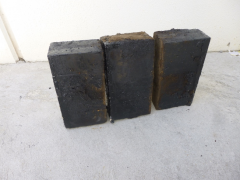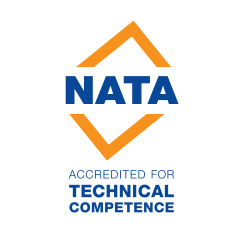Waste destined for landfill comes in many shapes, textures and sizes. Before any type of waste is determined suitable for landfill disposal, it must pass certain regulatory standards to ensure that it is able to be safely disposed of and requires no further treatment or isolated disposal.
One common form of waste we see in Victorian and Australian landfills can be classified as of ‘monolithic waste’.
What is Monolithic Waste?
Monolithic Waste is a waste that occurs in the form of large blocks, or large masses of dense, concrete-like material.
Monolithic waste can include solid materials such as concrete, glass, rubber or timber which may encase hazardous waste material within.
In simple terms, monolithic waste is a block of waste material that within it can house toxic or hazardous materials. For this reason, it’s imperative to know whether or not a monolithic waste sample:
1. Houses any toxic or hazardous materials
2. Whether the toxic material leaches from the monolithic waste sample (it’s leachability)
3. The rate of which toxic material is leaching
It’s particularly important to know whether or not a monolithic waste sample is suitable for landfill disposal.
Current Victorian EPA methods for leaching of components are focused on soils, which is not always relevant to monolithic waste.
So how can we analyse the leachability of a monolithic waste sample? Using a test known as the UK Tank Test.
What is A UK Tank Test?
A UK Tank Test simulates the leaching of components from monolithic waste to test for suitability for disposal to landfill.
A UK Tank Test is a 64-day leach test in which the leach solution is changed over at different time intervals to determine a rate of release of contaminants from the waste being assessed.
In a UK Tank Test, entire samples, test control samples and system blanks are placed into the leaching solution under controlled laboratory conditions.
This test allows us to analyse the rate of leachability for monolithic waste samples.
Case Study – UK Tank Testing of Monolithic Waste at Leeder Analytical
Leeder Analytical was provided with timber blocks that had been categorised as ‘Category A Waste’ and requested we conduct a UK tank test on the monolithic waste sample to determine if it meets landfill waste acceptance criteria.
Following the test protocol, the leach solutions were changed over at predetermined time intervals.
Leeder Analytical was able to provide leach data on the rate at which target compounds were released from the monolithic waste sample.
In the case of the monolithic waste timber blocks, the results indicated that some contaminants were found to be below Victorian EPA ASLP (Australian Standard Leaching Procedure) guidelines for category B and C waste and also the upper limit for industrial waste.
The ratio of leachate to solids used for the UK tank test (wooden blocks to leaching solution) was similar to that used for the ASLP leachates.
This was done so that the data generated could be compared to the Victoria EPA solid waste guidelines for ASLP.
The data generated and analysis from this 64-day UK Tank Test confirmed the findings of our characterisation of the surface coating, that the timber coating was non-reactive, has a waterproof coating and produced minimal leachates.
Results submitted to the EPA resulted in a re-classification of the wooden blocks, as the results did not exceed the Vic EPA category B, C or industrial waste ASLP limits.
For further information on UK Tank Testing, Waste Analysis and our full range of Environmental Testing Services please call, 03 9481 4167 or visit our contact page and submit an enquiry.




